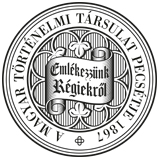Századok – 2010
TANULMÁNYOK - Dominkovits Péter - Pálffy Géza: Küzdelem az országos és regionális hatalomért. A Nádasdy család, a magyar arisztokrácia és a Nyugat-Dunántúl nemesi társadalma a 16-17. században (2. rész)
1120 DOMINKOVITS PÉTER - PÁLFFY GÉZA The positions of the Nádasdy family in the region in terms of power and land ownership underwent important modifications in the first third of the 17th family. The setback suffered was most serious in the county of Sopron, which was most sheltered from the Ottoman menace. In the second half of the 16th century the richest landowner of the county was still the Nádasdy family with almost 30 percent of all tenant sessions. Yet local noble society was profoundly transformed from the middle of the century in the wake of noble migration caused by the Ottoman expansion. Although the majority of the nobility continued to serve Tamás Nádasdy, some of them had fled from either Slavonia or the Southern Transdanubian counties, whereas another group, the members of which held important posts in the county (eg. the Bezerédy, Megyery, Ráttky, Récsey families), had come from Zala and Vas. When Ferenc II Nádasdy was appointed as főispán of Sopron county in 1588, the family took over the control over the county. Thus, around the turn of the 16th and 17th centuries, the local leaders of the county, that is, the alispánok, were generally elected from among the Nádasdy familiares. This very favourable situation changed in the first third of the 17th century. Although with the death of Ferenc II (1604) the office of/3ispán was lost for the family, it managed to maintain its influence over the government of the county through its network of familiares. Indeed, after the death of the new föispán, Ferenc II Batthyány (1625), at the turn of the 1620s and 1630s, Pál Nádasdy was even able to strengthen his position. Yet his success proved ephemeral in the face of a new rival, Miklós Esterházy, who had just risen to the ranks of both the Kingdom's narrow political elite and the greatest landowners of the region. The middle section of the 17th century was dominated by the struggle of these two families for local power, that is, for the dominance over the county. This struggle involved as a matter of fact the participation of their followers as well. Whereas the late 1630s and the early 1640s, that is, the second half of the officeholding of Miklós Esterház as ßispän of Sopron (1626-1645), was a predominantly peaceful period, the officeholding of his son, László Esterházy (1645-1652) was more loaded with conflicts. Thereafter Ferenc III Nádasdy, who had remained in the background so far, managed to regain control over the leadership of the county against the young ßispän, Pál Esterházy (1652-1713). The direction of the county, and before all the office of alispán, was again taken by Nádasdy familiares. Yet, as a result of the conscious and systematic estate building efforts of the Esterházy family, by the middle of the century the estate structure of the county had been profoundly transformed. According to the register of 1648, 20,7 percent of the taxable tenant sessions were owned by Ferenc III Nádasdy, whereas the greatest landowner of the county had become the Esterházy family with 33 percent. Yet the present study does not limit itself to the struggle for local dominance; it also analyses the changing positions of the Nádasdy family in terms of the composition and numbers of their noble familiares. It lays special emphasis on the ranks of military familiares, on their role in the defence of the region and in the maintenance of the border castles, and on the relationship between military administration and familiaritas. The research focussing on the county of Sopron devotes great attention to the transformations of local noble society and to the role of aristocratic familiares within them. This makes possible the analysis of the role of the Nádasdy family in the organisation of local society in a regional context. The relationship between dominus and familiaris, or, according to modern terminology, between patron and client, is examined from a special point of view, that of the role of pledge within the local estate structure. Estates given in pledge meant for the lord an easy means of getting cash, whereas for their noble familiares they could pave the way for social rise. Moreover, from the lord's point of view the system of estates in pledge was also a multi-level extension of their social influence - partly towards noblemen who were not in their service but held important local or higher offices, partly towards the familiares of other aristocratic families of the region. That it was so is well reflected by the fact that, despite the conflicts indicated above, even leading familiares of the Esterházy family (eg. Zsigmond Eörsy, Mihály Tar, etc.) frequently received estates in pledge from Ferenc III Nádasdy. The bipolar power structure which had characterised the county of Sopron and the whole of Northwestern Transdanubia changed definitively after the fall of judge royal Ferenc III Nádasdy in 1671. Profiting from this, the Esterházy family, led by palatine Pál, managed in the last third of the 17th century to take over most of the former functions of the Nádasdy in the region, and also to integrate into their own service the major part of the Nádasdy familiares. And, although the history of the Nádasdy family did not end with the execution of Ferenc III in Vienna, they were never able to regain the dominance on national and regional level which they had enjoyed, despite minor setbacks, during the whole period between 1536 and 1671.
